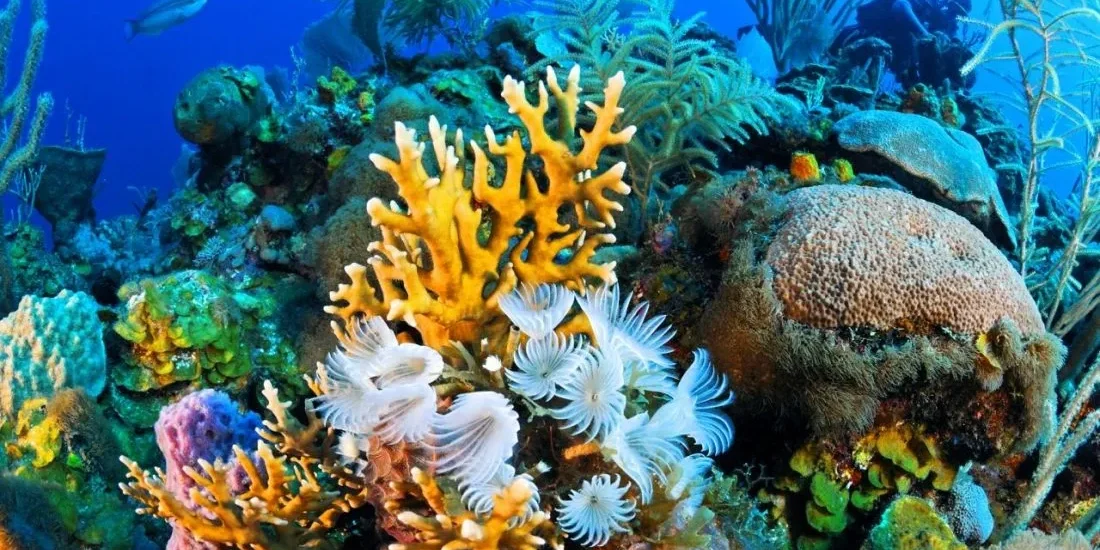Understanding Reef Fish
Coral fish are a bioindicator of the condition of coral reefs. Coral fish are generally observed more often in coral reef ecosystems that are still in good condition, and will experience a decline if the coral reefs are not good [2] . Reef fish communities are an important part in maintaining balance with the various components that make up the coral reef ecosystem [8; 12] . As organisms whose lives are related to coral reefs, damage or decline in the condition of coral reefs will affect the diversity and abundance of coral fish [11]
Reef Fish Category
Based on their daily distribution, coral fish can be divided into two groups, namely fish that are active during the day (diurnal) and fish that are active at night (nocturnal). According to Lowe and McConel (1987), most coral fish are diurnal and nocturnal fish are usually carnivorous fish. According to Randall et al. (1990), diurnal fish are generally brightly colored herbivorous fish which at night hide in rock crevices or small caves near the coral surface and some bury themselves in the sand. Several descriptions of coral fish families according to Randall et al. (1990), namely:
- Acanthuridae: known as surgeonfish , feed on bottom algae and have a long digestive tract; The main food is zooplankton or detritus. Surgeonfish are able to cut other fish with sharp spines on their tail fins.
- Balistidae: a class of triggerfish , carnivores that live solitary lives during the day, feeding on a variety of invertebrates including hard-shelled mollusks and echinoderms; some types also eat algae or zooplankton.
- Blennidae: usually live in small holes in reefs, mostly bottom-digging species that feed on a mixture of algae and invertebrates; some eat plankton, and some specialize in eating the skin or fins of large fish as a cleaner.
- Caesonidae: known as yellowtails, during the day they are often found in groups in the water column on reefs, cliffs and peaks in goba. Although active swimmers, they often stay still to catch zooplankton and usually take refuge in reefs at night.
- Centriscidae: swims in an upright position with snout down; eat small zooplankton.
- Chaetodontidae: also called butterfly fish , generally have brilliant colors, eat coral tentacles or polyps, small invertebrates, other fish eggs, and filamentous algae, some species also eat plankton.
- Ephippidae: flat, flat body shape, small mouth, generally omnivores, eating algae and small invertebrates.
- Gobiidae: generally found in shallow waters and around coral reefs. Most bottom-digging carnivores feed on small bottom invertebrates, some are also plankton eaters. Some species have symbiotic relationships with other invertebrates (e.g. shrimp) and some are known to transfer ectoparasites from other fish.
- Labridae: are economically important fish, having very different shapes, sizes and colors. Most species are sand burrowers, carnivorous for bottom invertebrates; some are also plankton eaters and some small species transfer ectoparasites from other, larger fish.
- Mullidae: known as goatfish , have a pair of barbels on their chins, which contain chemical sensory organs and are used to check for the presence of bottom invertebrates or small fish in the sand or holes in the reef, many of which are brilliantly colored.
- Nemipteridae: carnivorous fish that generally eat small bottom fish, cuttlefish, shrimp or worms; some species are plankton eaters.
- Pomacentridae: known as damselfish , have a variety of colors that differ individually and locally for the same species. Some species are herbivorous, omnivorous or plankton-eating fish. Damselfish lay their eggs on the bottom guarded by male fish. Included in this group are anemone fish (Amphiprioninae) which live in association with sea anemones.
- Scaridae: known as parrotfish , herbivores, usually obtain algae from dead coral substrates. Chewing coral rocks and algae and forming coral sand, this makes parrotfish one of the important sand producers in the coral reef ecosystem. Scaridae are economically important fish.
- Serranidae: known as seabass , grouper, bottom-digging predators, commercial fish, feed on crustaceans and fish.
- Sygnathidae: known as seahorses or pipefish . Some have beautiful colors. Generally confined to shallow waters. Eats invertebrates by sucking on its snout pipe.
- Zanclidae: has a shape like Acanthuridae with a tabular mouth without spines on the tail. Sponges also eat basic invertebrates.
Based on utilization function and ecological aspects, coral fish can be grouped into three, namely target fish, indicator fish, and other groups (major groups) [1] . The fish species recorded are grouped into three main groups (English et al., 1997), as follows:
- Target fish, namely economically important fish and are usually caught for consumption. Usually these fish use coral reefs as spawning grounds and nursery areas. These target fish are represented by the tribes Serranidae (grouper fish), Lutjanidae (snapper fish), Lethrinidae (lencam fish), Nemipteridae (chairfish), Caesionidae (yellowtail fish), Siganidae (baronang fish), Haemulidae (thick lip fish ), Scaridae (parrot fish), and Acanthuridae (pakol fish);
- Indicator fish, namely types of coral fish that typically inhabit coral reef areas and are indicators of the fertility of the area’s ecosystem. Indicator fish are represented by the tribe Chaetodontidae (butterfly fish);
- Major fish are small fish, generally 5–25 cm, with various coloring characteristics so they are known as ornamental fish. This group is generally found in abundance, both in number of individuals and type and tends to be territorial. These fish live on coral reefs all their lives, represented by the tribes Pomacentridae (sea betok fish), Apogonidae (serinding fish), Labridae (broomstick fish), and Blenniidae (mimic fish).





